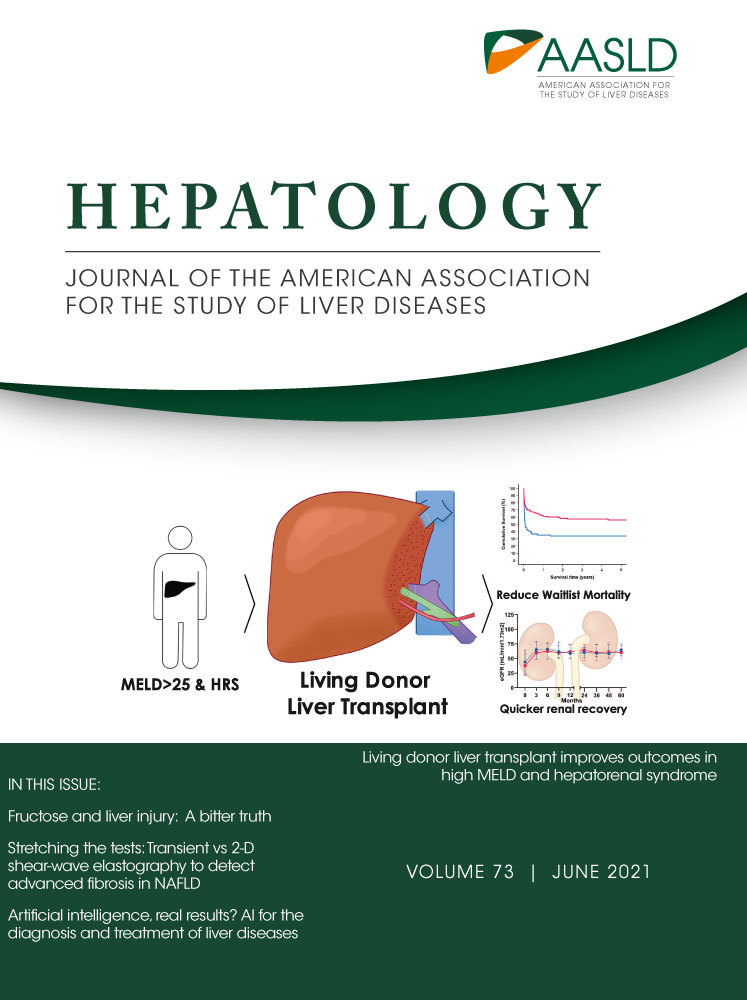Letter to the Editor: Comment on “HepatoScore-14: Measures of Biological Heterogeneity Significantly Improve Prediction of Hepatocellular Carcinoma Risk”
TO THE EDITOR:
We have read with great interest the article published in Hepatology by Morris et al.(1) The authors carried out a retrospective study including 767 patients with hepatocellular carcinoma (HCC) and 200 healthy individuals as a control group to comprehensively construct a risk score from circulating biomarkers and predict survival in patients with HCC. Morris et al. found that 14 representative proteins could encompass the global biological effects of plasma proteins and could be used to construct a single-sample score, termed the “HepatoScore-14.” We appreciate their efforts to provide insights into the survival prediction of patients with HCC. However, some points are worthy of further discussion.
First, the patients' baseline characteristics in the HCC group were very different from those in the control cohort. These differences included ethnicity, sex, smoking history, alcohol consumption, diabetes history, and hepatitis history. The difference in baseline characteristics could introduce bias to the model comparison. Additional analyses should be performed, considering this point. We can consider using a propensity score to balance and match the features of the experimental and control groups.
Second, the authors used the C-index as a metric for assessing the predictive performance of the model. However, this is not enough as this measure does not sufficiently capture calibration aspects. The C-index reflects the high-risk/low-risk discrimination ability, while calibration reflects the consistency between the actual probability and the predicted probability.
Finally, we suggest that in subsequent studies the authors could attempt to provide a more specific treatment strategy and include the choice of surgery or adjuvant therapies into the model interpretation. The choice of surgery and risk factors for postsurgery complications are confounding factors that influence the prognosis of patients with HCC and are essential issues in HCC treatment. While the HepatoScore-14 could identify risk factors related to survival time, it could also be used as a reference for future decision-making. For example, different stages in the Barcelona Clinic Liver Cancer (BCLC) system are directly related to the recommendation of specific management procedures,(2) as follows: surgery is recommended for A1, and transarterial chemoembolization is recommended for B. As the HepatoScore-14 has already revealed the heterogeneity in each BCLC group, adjustment could also be made to the treatment strategy for each stage. Moreover, if surgery is considered, comparing the model with a widely used existing model such as the tumor–node–metastasis staging system could prove the model's superiority and better discrimination ability.(3)
In summary, we appreciate the authors for their essential and promising study, in which they developed an effective model for clinical application in patients with HCC.
Author Contributions
L.S. and A.G. were responsible for conceptualization. All authors wrote and reviewed the manuscript.




